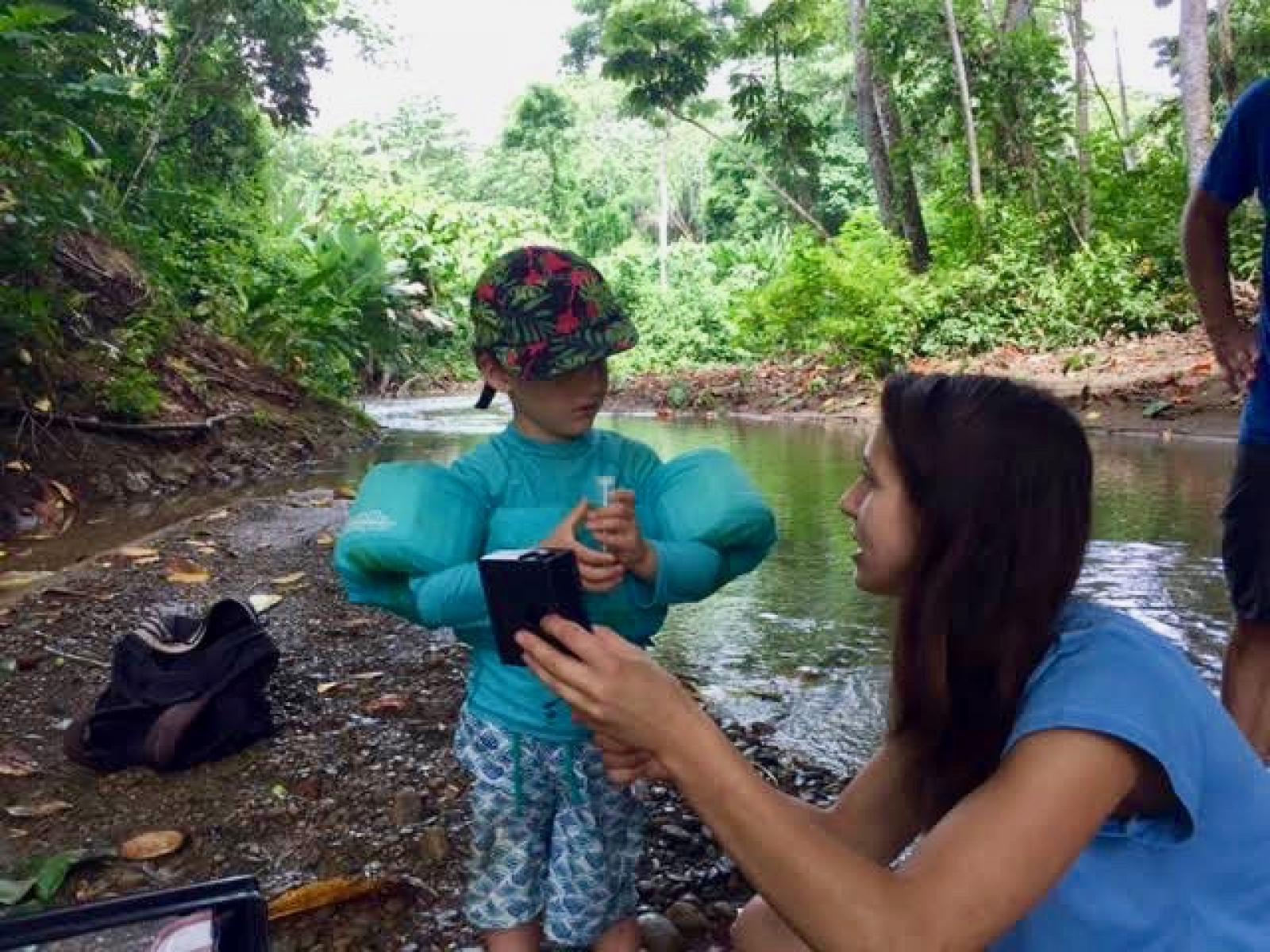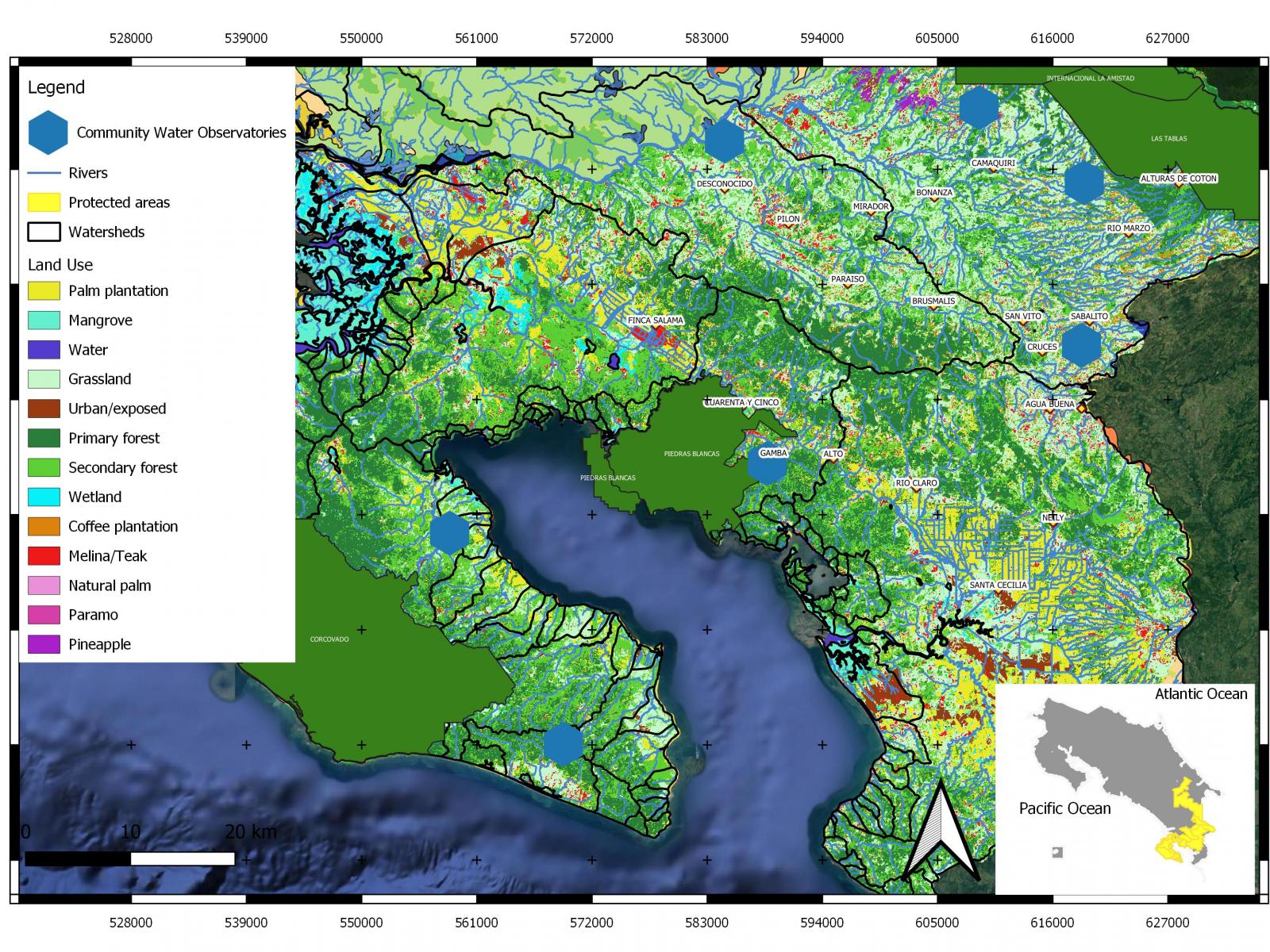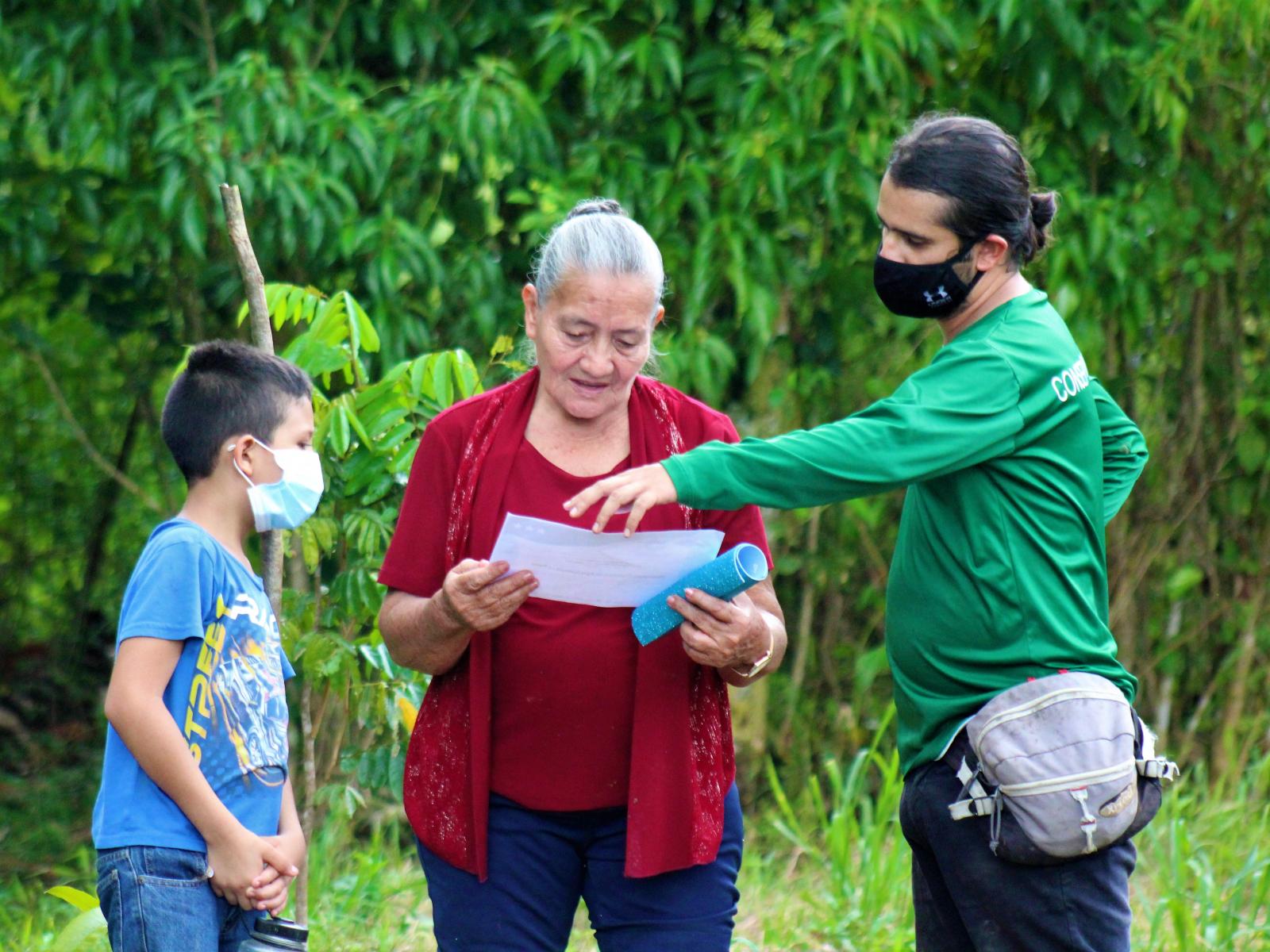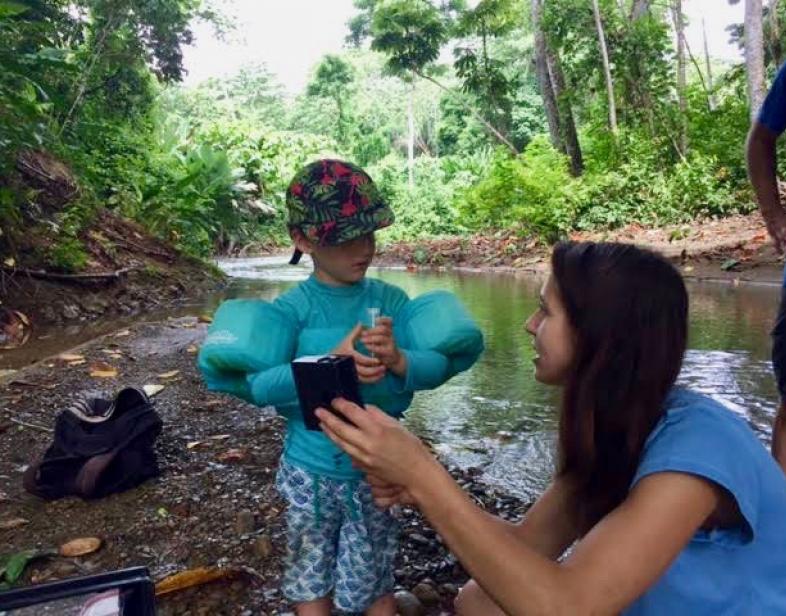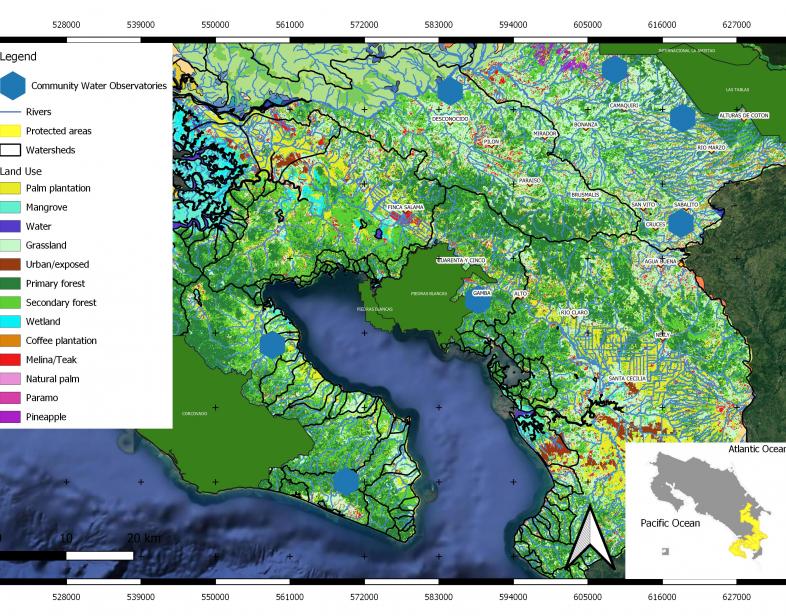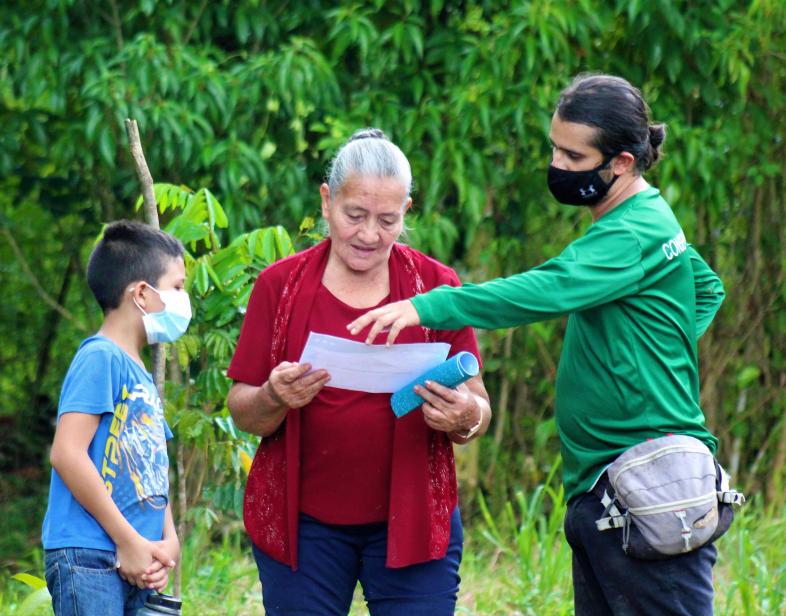An Overview Of Our Solution
Osa Conservation, in the Osa Peninsula, Costa Rica, has created a Healthy Rivers Program to integrate solutions in the protection of water resources and surface water quality. The program uses a holistic approach that integrates research through biomonitoring of water quality, the protection of both water sources and riparian zones through riparian restoration and the integration of these components with community involvement by empowering local people as citizen scientists to monitor their rivers and restoring riverbanks through a community restoration network. This is strengthened by the creation of Community Water Observatories (CWO), platforms created by the community itself to take actions for the conservation and protection of its rivers in conjunction with community members, children's groups and local organizations.
- Population Impacted: 535 (406 youth)
- Continent: North America
姓
名
机构类型
背景分析
Although The Osa Peninsula in southern Costa Rica is one of the country’s poorest regions, it is home to approximately half of the country’s 500,000 species, and 2.5% of world’s biodiversity. Connecting forests at the Osa Peninsula to La Amistad International Park, the biggest continuous forest mass in Central America, is key to enhancing the Region’s biodiversity.
Costa Rica is seen as a world leader in environmental policy. However, it has the highest per hectare use of pesticides of any country, with only 4% of water treated before entering Costa Rican waterways. In our target Region, pesticides are directly poured on rivers for shrimp fishing, affecting both freshwater biodiversity and human health.
Working with multiple stakeholders, our solution teaches skills to monitor water chemistry and biological indicators of healthy waterways, therefore creating a culture of conservation leaders who work together with researchers to keep their streams healthy
描述您希望目标受众采用的技术解决方案。
We created Community Water Observatories (CWO), which formalize local groups interested in restoring the health of their rivers and water quality. CWOs have 3 objectives: Riparian restoration: restoration is planned, designed and implemented in conjunction with local organizations, leaders and community members in order to recover degraded, or dredged areas, as well as sites with increased river sedimentation. Citizen science and environmental education: using the rivers that make up the CWOs as open laboratories, groups of children or organized environmental groups are trained in the use of bioindicators (i.e. macroinvertebrates) as a means to determine water quality. Bioremediation: we involve communities in bioremediation activities, providing simple tools and methods such as creating mudballs infused with microorganisms to restore surface water quality. This helps significantly reduce pollutants found in the water.
描述你的行为干预。
Community Water Observatories are very flexible platforms, in which the performance of activities will depend on the capacities and time availability of the community members. In the case of biomonitoring we use basic materials such as spoons, trays and visual identification guides. This is one of the advantages of biological monitoring, it is easy to conduct sampling and the different taxonomic groups can be easily identified. To monitor the water chemistry, monitoring kits are provided that measure the different levels of contamination within a color gradient from least to greatest level of chemical pollution. Furthermore, with bioremediation, basic materials such as clay, plastic boxes and effective microorganisms (specific groups of microorganisms that degrade pollutants) are needed. This can be easily obtained through strategic allies. Finally, riparian restoration is a process of community involvement in which interested people are trained on the different species they will be planting, care for and the benefits it holds for them (water quality) and local fauna. The work we do with organized groups such as ASADAs or Community Development Organizations favors the motivation to carry out the activities to solve pollution problems as it is a matter of water quality safety and human health.
使用的行为杠杆
如需要,请更详细地解释你是如何使用杠杆的。
Creating CWOs required Emotional Appeals, Information, and Social Influences levers. They play well into a community's emotional appeal, as such we focused on workshops and even community festivals celebrating bioremediation goals when using mudballs. This has empowered involved community members, and has also created a sense of belonging to their local water basins. We have also worked on workshops and training sessions on river monitoring providing communities with information about their rivers and the benefits of protecting them. This has generated amusement and surprise, especially in younger community members, when they discover the hidden world of beneficial insects that populate their rivers. The use of social media and other communication channels, within and between communities, promoted CWOs in a positive way so others would become interested and participate actively. School engagement also played an important role in getting families involved.
描述项目的实施。
Riparian restoration, change of agricultural practices and forest enrichment to enhance connectivity through the watershed along an altitudinal landscape. Community biomonitoring to assess water quality by biological and basic chemistry measurements. Participatory bioremediation of rivers in each CWO with participation of nearby schools, local environmental groups, and community members.
One of the fundamental responsibilities of the CWO is to obtain a Blue Flag Certificate (BFC) for micro-watersheds, which must be renewed annually. BFC are awarded by Costa Rica’s Government and provide communities with incentives such as free annual physical-chemical, microbiological and biological analysis of water by the National Water Laboratory of Costa Rica and the national recognition.
The Costa Rican Government has made strides through government institutions and laws to facilitate and legitimize community groups, such as Integrated Community Development Associations (ASADA). They are a special case that demonstrates the value of community organization, in which a group of local people, manage the protection, management and distribution of drinking water in the community.
The main success factor has been to have a multidisciplinary project approach in the organization, which has made it possible to contact people and groups interested in strategic areas and the implementation of several techniques of riparian restoration, wildlife monitoring, environmental education and citizen science.
The main obstacle has been the inability, due to COVID sanitary restrictions, of hosting activities on biomonitoring and community forest restoration in the CWOs created in 2020. The most effective solution has been to lead the activities with very small groups, enforcing appropriate sanitary measures, and change the focus from schools (closed by This solution allowed us to conduct a total of 7 workshops with 7 communities.
描述项目的主导者。谁在主导项目实施?
The solution has been led by 2 people starting their careers in conservation, who have shown remarkable leadership to create strategic alliances and activity implementation. The first step to attain a solution to reduce water pollution in the Osa was taken by Hilary Brumberg, a 23-year-old environmental manager from Boston, who strengthened a water monitoring network in Osa, and carried out periodic river biomonitoring. She started up the first CWO in Osa and one of the first ones in Costa Rica. Later, Jonathan Navarro, a costarican biologist and watershed manager, starting his professional career in watershed conservation with this position, continued with the creation of 6 additional CWOs to carry out riparian restorations, biomonitoring and bioremediation. In the future, we are also aiming to empower and support the leadership of young local leaders in each CWO, both from local schools and youth environmental groups in order to achieve the long-term success of the solution.
分享参与解决方案开发和实施的关键合作伙伴。
Government institutions, civil society organizations, community associations, private sector and education institutions have been key partners for the success of Community Water Observatory adoption by communities. To preserve local watersheds, Osa Conservation has paired up with Local Development Associations, the National Alliance of Rivers and Basins of Costa Rica, Community Water Management Associations (ASADAs), the Ministry of Agriculture and Livestock (MAG by its Spanish acronym), the Cooperative of Palm and Cacao Producers of Osa Peninsula (OSACOOP), and local schools.
The National Alliance of Rivers and Basins of Costa Rica has also been a key partner, since they work directly with water quality and community stewardship of rivers around Costa Rica by focusing on bioremediation, community engagement in river conservation, ecosystem protection, river monitoring and carbon footprints. Additionally, ASADAs, are a government recognized entity created by community members to manage, safeguard community water quality and supply. They have been a fundamental piece in CWOs community involvement. The MAG, as well as the Cámara Independiente de Ganaderos del Sur and OSACOOP, have been great allies and liaison between OC and local farmers helping to promote riverside tree planting to restore watersheds. Schools have also played a key role in supporting the CWOs helping involve children in learning about restoration, biomonitoring and bioremediation.
谁采用了期望的行为,采取的程度如何? 解释一下你如何测量行为变化的。
We have already seen beneficial behavioral changes in landowners, community environmental groups and ASADAs engaged in our solutions. They have become a great support in monitoring efforts, identifying places for riverside tree plantings and holding festivals in the river to involve children in environmental education. The main measure of behavioral change on our solution has been the BFC that was awarded for micro-watersheds in 2 of our CWOs. These communities are actively working to renew the BFC award by continuing regular water monitoring activities and expanding the riparian restored areas. We have also noticed the increased interest in neighbouring communities to be involved in planting, biomonitoring or bioremediation processes. Thanks to this observed trend, we have been able to include more farms in our riparian restoration network.
项目是如何影响水污染的?请详细说明并包括相关的测量方法。
Our solution focuses on riparian restoration as the main driver for water quality improvement. At the oldest riparian restoration site (implemented in 2019) there has been no significant changes in water quality yet. In 2020 we started involving more farms and we aim to continue monitoring to see positive effects in the medium and long term.
The water quality sampling is taken in 2 sites, one at the beginning and the other at the end of each restored creek, in which both biological and chemical data is taken two times a year to consider dry and wet seasons. For Bioindicators, quadrants are established in the rivers monitored in a random fashion. D-nets were used to sample within quarants. The content from the D-net was placed in white plastic trays. The contents are examined for macroinvertebrates and later identified. Water chemistry (conductivity, dissolved oxygen, nitrate, pH, among other parameters) is analyzed within the above quadrants are measured using a multiparameter.
您的解决方案如何促进平等(包括种族、性别、民族、社会阶层/收入,或其他)?
The proposed solution to improve water quality is focused on landowners of any social class alike. The first riparian restoration in La Palma CWO, has been led by Celedonia, an elderly woman with low income, with the help of Yisel, her daughter, and her great-granddaughter Nataly. On this site over 1000 trees were planted, and their active participation in the tree planting activity, as well as having groups of children monitoring the river on their farm, has motivated Celedonia’s family to continue recovering the river section within their property. In the creation of recent CWOs on La Amistad International Park buffer zone community groups led by women have been significantly empowered. Firstly, at the Biolley Observatory near La Amistad led by Yendri, a local community leader. Secondly, at Fila Tigre CWO, where the leadership of Maritza and Zeidy (a single mother of 5 kids) have contributed to riparian restoration efforts.
社会和/或社区是如何受益的?
Two clear examples are OSACOOP, in which palm producers must incorporate good practices to give added value to their products and obtain environmental certificates and thus benefit from better income. The community water management ASADA La Palma has also benefited from supporting us in environmental education and riparian restoration processes to obtain funds and certificates to continue managing the community's water. There is also a community cohesion in this solution.
环境是如何受益的?
The main environmental effects of this solution have been around 4 km (6 ha) of reforested riparian areas to increase connectivity of forest patches, which we hope in the medium and long term will have effects on better water quality, less sedimentation, creation of a barrier natural to protect communities from flooding and large-scale movement of animals through altitudinal corridors through rivers. All these positive co benefits will be seen in the medium term as the trees grow.
可持续发展如何得到促进?
Initiatives such as the riparian restoration at Finca de Doña Celedonia in La Palma CWO, explained above, provides the opportunity for farm owners to gradually incorporate other economic practices in their properties, such as the sale of services by tourist visitors to the farm in the future. Therefore this is a great first step in empowering local people and communities to expand their business activities. Also this solution aims to provide better water quality and in a permanent way.
可持续性:描述你的解决方案的经济可持续性。
To ensure project sustainability we will cultivate strong local, national and international partnerships. Costa Rica has an organized structure for community-based water management, with over 2,000 ASADAs offering an ideal platform to diffuse this project nationally. These organizations have recently incorporated an environmental incentive in charging their services for riparian restoration activities, protection of sources and monitoring. Ideally, the target groups need resource support at the beginning, but it is expected that in the medium term they will achieve financial independence. We will share results with key national stakeholders, including national universities and governmental institutions to promote the solution.
投入产出:实施这些活动的成本是多少?与你上面的结果相比,你的结果如何 这投资吗?
It cost a total of $5450 to implement 5 riparian restoration events (to restore 3 ha) alongside 1 bioremediation activity, 7 Community Water Observatories formed and 5 citizen science river water quality monitoring workshops held (reaching 50 people).
The results were successful compared to what was invested, since at the beginning it was necessary to support the CWOs more for the implementation of activities, but over time the local members of the observatories take leadership and carry out the activities with more independence.
如何能将这个解决方案成功推广在其他地方?
It is necessary to replicate these efforts at the basin level. Therefore, the same package of solutions (restoration, biomonitoring and bioremediation) can be applied to reduce pollution through the creation of Community Water Observatories to have a platform in which to carry out riparian restorations, citizen science and bioremediation. In order to achieve success at the watershed level, people are needed in the field to identify restoration sites, train people in the creation of nurseries and planting, create links with proactive communities to formalize CWO in which citizen science trainings can be replicated in the biomonitoring of water and bioremediation with citizen participation including women leaders and children to ensure long-term processes.
A next important step to scale up this solution, with $20,000 in funding, we would be able to work with 12 more communities, hold 15 workshops (reaching 800 people), restore 6 ha in key riparian sites and create 12 CWOs.
